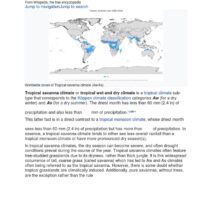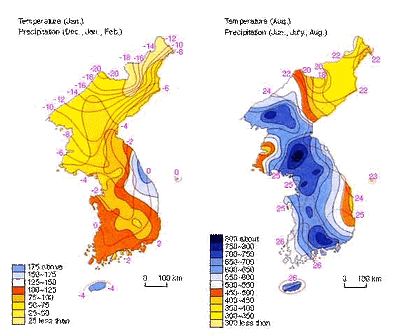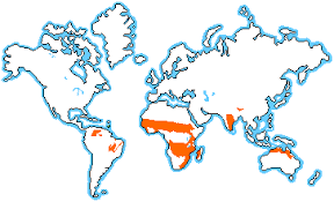South Korea is known as the “Land of Morning Calm,” a title that reflects the country’s stunning natural beauty and serene landscapes. However, its climate is anything but stagnant. This region experiences distinct seasonal variations that significantly impact its environment, agriculture, and daily life. To understand the climate of South Korea, one must delve into the intricacies of its four seasons: spring, summer, autumn, and winter.
Spring: A Flourishing Awakening
Spring in South Korea is a visually and emotionally invigorating season. Generally spanning from March to May, this period signals the end of the harsh winter months. The melting snow gives way to vibrant flowers, particularly cherry blossoms, which bloom in an exquisite display that draws both locals and international tourists alike. The air is imbued with a sense of renewal as temperatures gradually rise, hovering between 10°C to 20°C (50°F to 68°F).
This metamorphosis not only rejuvenates the flora but also fosters agricultural practices. Crops such as rice, barley, and various vegetables are planted, aligning with traditional agrarian calendars. In this way, spring is not just a season of beauty but also a crucial period for food production. As farmers prepare their fields, citizens celebrate the arrival of warmth with festivals, hiking excursions, and picnics, creating a cultural vibrancy that underscores the significance of the season.
Summer: The Fervent Embrace
From June to August, South Korea undergoes a transformation into a hot and humid landscape. This season is marked by sweltering temperatures, often exceeding 30°C (86°F), combined with high humidity levels, particularly in coastal areas. The monsoon season, known as “jangma,” typically occurs between late June and July, bringing about heavy rainfall that can lead to flooding and landslides.
The intensity of summer weather has profound implications. While it allows for rapid plant growth and is pivotal for a variety of fruits such as peaches and melons, the heat can also challenge the human body and necessitate adaptive strategies. Citizens often seek refuge in air-conditioned environments, while outdoor activities are generally scheduled for early mornings or late evenings to evade the peak heat.
Moreover, summer influences environmental dynamics significantly. The heavy monsoon rains can lead to both challenges and opportunities for the aquatic ecosystems. Streams swell, creating a fertile habitat for numerous species, while also presenting risks of water pollution and loss of biodiversity due to increased runoff.
Autumn: A Period of Reflection
As the oppressive heat recedes, South Korea enters autumn, a season often celebrated for its stunning foliage and temperate climate. From September to November, temperatures begin to drop, ranging from 10°C to 20°C (50°F to 68°F). The natural landscape is painted in hues of red, orange, and yellow, making it an idyllic time for outdoor adventures and cultural pilgrimages.
Autumn also serves as a vital agricultural phase, as farmers harvest crops planted in the spring. This period is characterized by bountiful yields—rice harvests reach their pinnacle, and traditional festivities like Chuseok, or the Korean Thanksgiving, are celebrated with family gatherings and feasts, emphasizing gratitude for the harvest.
The cooler weather offers a reprieve from the summer’s sweltering embrace, allowing for a renewed appreciation of the outdoors. Hiking trails become bustling with enthusiasts eager to witness the stunning transformation of the forests, a phenomenon that symbolizes both the resilience of nature and the cyclical patterns of life.
Winter: A Time of Hibernation
Winter blankets South Korea from December to February, ushering in a period characterized by cold temperatures that can drop below -10°C (14°F) in some areas. The iconic snow-capped mountains become a haven for winter sports enthusiasts, attracting both locals and tourists to engage in skiing and snowboarding. Yet, the chill in the air serves as a stark reminder of nature’s power.
This season is not merely about hibernation; it is also a time for introspection and communal bonding. Traditional winter delicacies, such as tteokguk (rice cake soup), symbolize the ushering in of the New Year. The stark beauty of winter landscapes envelops cities, where the minimalist essence of snow transforms urban life into a seemingly tranquil paradise, pausing the usual hustle and bustle.
Climate Change Impacts
While every season embodies its distinct characteristics, the climate of South Korea is increasingly subjected to perturbations led by climate change. Rising temperatures and unpredictable weather patterns threaten agricultural outputs, biodiversity, and water resources. South Korea’s vulnerability to climate extremes, including intense rainfall and prolonged droughts, poses a significant challenge to sustainable practices.
As the nation grapples with these unprecedented challenges, there is an opportunity for innovative solutions. Focus on renewable energy sources, reforestation projects, and sustainable agricultural practices can help mitigate the impacts of climate change. Understanding the multifaceted aspects of South Korea’s climate and its four seasons can provide insights into fostering resilience and sustainability in the face of impending ecological threats.
In summary, the climate of South Korea is an intricate tapestry woven through its four distinct seasons. Each season offers unique contributions to the ecological, agricultural, and cultural landscapes of the nation. As the world continues to evolve, so too must our understanding of these climatic nuances. Embracing this knowledge can ignite a passion for environmental stewardship and proactive engagement, ultimately leading to a more sustainable world.






